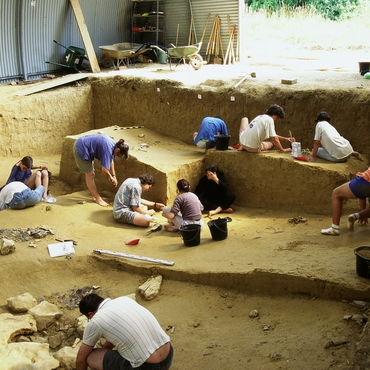
- Home
- Explore the site
- The habitations, camps and their surroundings
- The organisation of the camps
Each of the camps contained several tents with additional hearths located in the open air, slightly further away.
Habitations and the surrounding areas
The space closest to the habitations was used for activities (in particular flint knapping) and the disposal of waste (flint, waste from the hearths and faunal remains). Further away, near the outdoor hearths, inhabitants met to work and sometimes to share a meal. Studies carried out so far suggest that each camp housed a small community made up of several families.
The same type of settlement
The excavations in the first sector, at “Les Coudray”, show that the organisation of the camps was the same in the different levels. The tents were located on the flat area on the bank of the Ru des Hauldres, while the outdoor hearths were on the slope alongside the water. The same organisation is found on the opposite bank, at “La Fontaine au Soulier”.
An established location on the nomadic routes of Magdalenian hunters
The fact that the Magdalenians repeatedly returned to the site indicates that it was a traditional stop for them within the territory across which they travelled. Sometimes just a few centimetres separate the silt from two successive occupations. The flooding of the Seine was irregular, which makes it difficult to apprehend how regular these occupations were. We also do not know over how many centuries the Magdalenians used the site.



